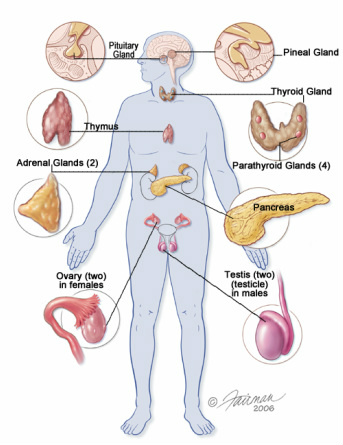Introduction
Unit IV is presented during year 3 over a period of 12 weeks, and it includes the endocrine system and metabolism subunit and the reproductive system subunit. The unit is designed keeping in mind the spiral nature of the curriculum; it is based on the earlier units (I, II and III), especially unit I, which have dealt with general concepts. Several concepts introduced in earlier units are required to be reviewed and expanded during this unit.
Subunit 1 includes problems related to metabolism and the endocrine system. It encompasses the regulatory mechanisms maintaining endocrine-metabolic homeostasis, i.e. the hormonal mechanisms by which all body systems are controlled and integrated.
Several endocrine glands will be suited in terms of control mechanisms and secretory products, but it is important to realize that the function of any one gland is affected by others. Endocrinology-metabolism addresses many basic biochemical and physiological principles, as well as the structural bases for their functions.
This subunit will be presented over a period of 6 weeks and includes several problems (an mini-problems). In addition, it also provides a general framework for the second subunit in which the problems related to the biology of human reproduction and some related psychosexual dimensions are addressed. The six problems (and mini-problerms) in this subunit address the structure and function of the female and male reproductive systems, pregnancy and related dysfunctions.
Two other programs are complementary to this unit. The professional skills program will provide an opportunity to acquire the clinical and laboratory skills relevant to this unit. The maternal and child health programs to be given during years 2,3 and 4 will link this unit with many community health dimensions.
It is hoped that the range of problems presented during this unit (and in other units) will provide opportunity to students to explore and achieve the essential learning objectives of the unit.

Latest comments
I want the cardio content
where is the cardio content ?
يعطيك العافيه شكرا لك الله يسخرلك عباده الصالحين
Hello, i need to contact you through email as soon as possible. thank you.